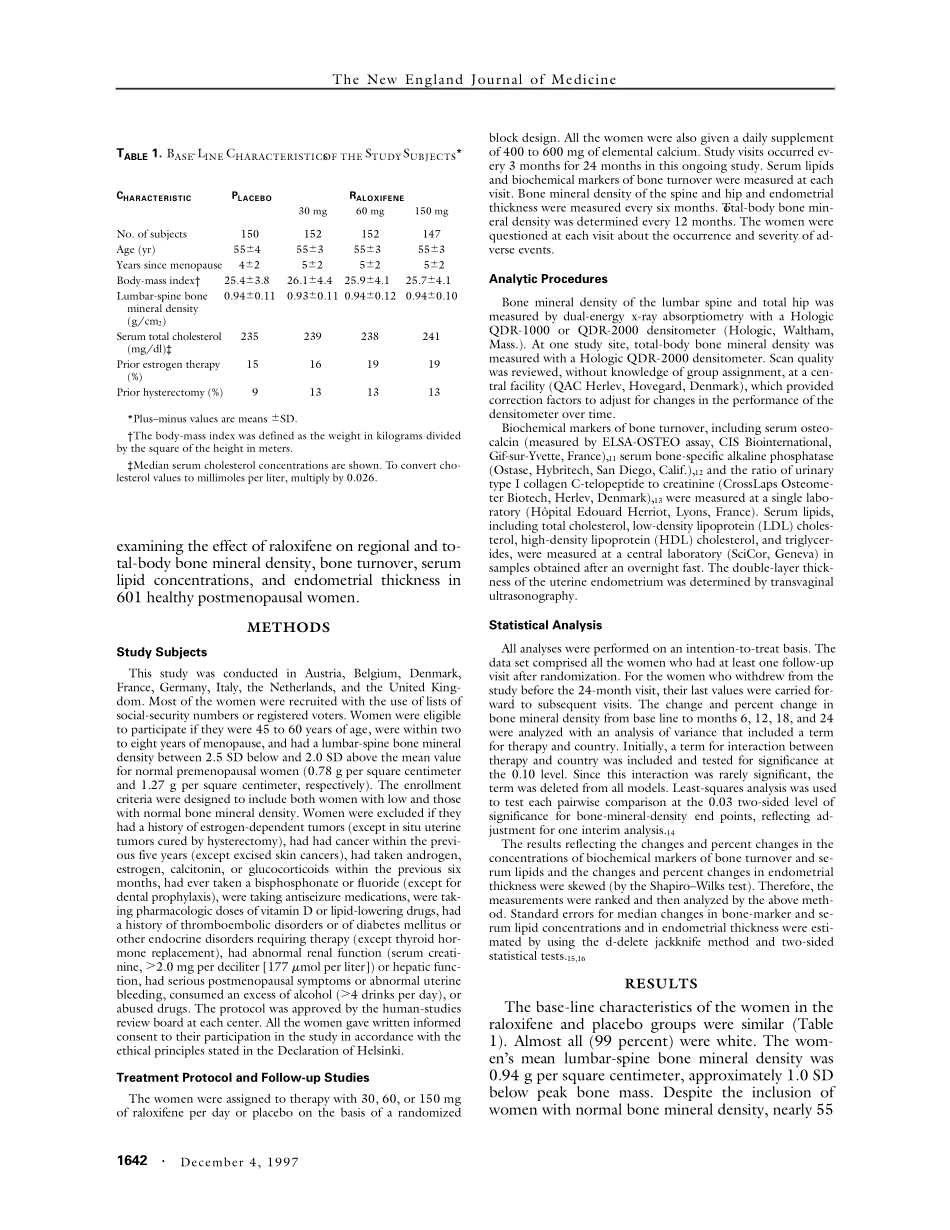Volume 337Number 23 ؒ 1641 The New England Journal of Medicine © Copyright, 1997, by the Massachusetts Medical Society VOLUME 337 D ECEMBER 4, 1997 NUMBER 23 EFFECTS OF RALOXIFENE ON BONE MINERAL DENSITY, SERUM CHOLESTEROL CONCENTRATIONS, AND UTERINE ENDOMETRIUM IN POSTMENOPAUSAL WOMEN P IERRE D. D ELMAS , M.D., P H .D., N INA H. B JARNASON , M.D., B RUCE H. M ITLAK , M.D., A NNE -C ATHERINE R AVOUX , M.D., A ARTI S. S HAH , P H .D., W ILLIAM J. H USTER , P H .D., M ICHAEL D RAPER , M.D., P H .D., AND C LAUS C HRISTIANSEN , M.D. A BSTRACT Backgrou nd Long-term estrogen therapy can re-duce the risk of osteoporotic fracture and cardiovas-cular disease in postmenopausal women. At present,however, these beneficial effects are not separablefrom undesirable stimulation of breast and endome-trial tissues. Methods We studied the effect of raloxifene, a non-steroidal benzothiophene, on bone mineral density,serum lipid concentrations, and endometrial thick-ness in 601 postmenopausal women. The womenwere randomly assigned to receive 30, 60, or 150 mgof raloxifene or placebo daily for 24 months. Resu lts The women receiving each dose of ralox-ifene had significant increases from base-line valuesin bone mineral density of the lumbar spine, hip, andtotal body, whereas those receiving placebo had de-creases in bone mineral density. For example, at 24months, the mean ( Ϯ SE) difference in the change inbone mineral density between the women receiving60 mg of raloxifene per day and those receiving pla-cebo was 2.4 Ϯ 0.4 percent for the lumbar spine,2.4 Ϯ 0.4 percent for the total hip, and 2.0 Ϯ 0.4 percentfor the total body (P Ͻ 0.001 for all comparisons).Serum concentrations of total cholesterol...


